
How to grow a bergenia in a pot?
Successfully planting and maintaining shoe maker's plants
Contents
Bergenias are valued for their evergreen foliage, which can sometimes change colour in autumn/winter, as well as for their delightful spring flowering in bell-shaped blooms. These perennial plants form dense groundcovers, allowing for greening even poor and shaded areas.
Bergenias are also perfect for creating beautiful flowering pots, or for dressing the base of potted bushes. They are indeed well-suited for container cultivation.
Here are our tips for planting and caring for bergenias in pots.
Which bergenia varieties to choose?
Easy to grow, low-maintenance, and small in size, bergenias are well-suited for pot, planter, bowl, or small container cultivation. You will have a choice among various varieties in shades of pink, red, or white.
We recommend that you prioritise the most compact cultivars with smaller foliage, such as:
- ‘Baby Doll’, with very soft pale pink flowers (25 cm in height and 40 cm in spread);
- ‘Flirt’, featuring bright pink flowering (20 cm in height and 30 cm in spread);
- ‘Dragonfly Sakura’, combining pale pink and dark pink (25 cm in height and 30 cm in spread);
- ‘Ice Queen’, with green and cream bells (25 cm in height and 30 cm in spread);
- ‘Bach’, producing flowers that are pale pink with a cherry-black centre (30 cm in height and 40 cm in spread);
- the Bergenia purpurascens, with pale pink to bright pink flowers atop purple stems (30 cm in all directions).
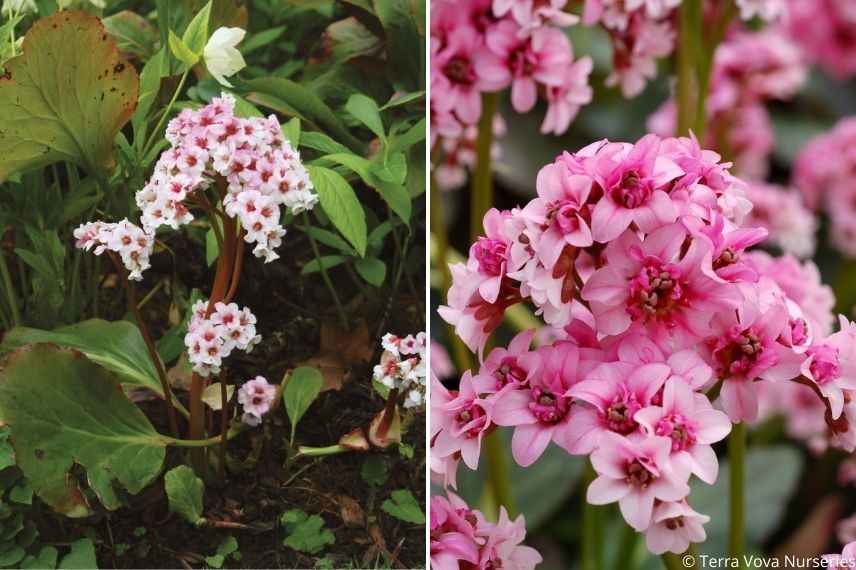
Bergenia ‘Baby Doll’ and Bergenia cordifolia ‘Dragonfly Sakura’
When to plant bergenia in pots?
Potted planting of bergenia is done:
- either in spring, between late March and May, once the last frosts have passed;
- or in autumn from September to November, in regions with mild winters (not dropping below -5 °C).
Discover other Bergenia
View all →Available in 0 sizes
Available in 2 sizes
Available in 1 sizes
Available in 1 sizes
Available in 2 sizes
Available in 1 sizes
Available in 2 sizes
Available in 1 sizes
Available in 2 sizes
Available in 1 sizes
Planting Bergenia in Pots
The Container
For planting your bergenia in a pot, choose a container of about 40 cm in diameter or width with the same depth.
Opt for a larger one if you wish to grow other plants in the same container, thus creating a flowering pot.
We recommend using terracotta pots. This porous material allows for better natural aeration of the substrate.
Be sure to choose a container with drainage holes, allowing excess watering or rainwater to escape properly.
The Substrate
Bergenia is a low-maintenance and non-demanding perennial. In the garden, the plant thrives in all types of soil, even poor and calcareous ones. It simply requires good drainage to prevent water from stagnating, thus avoiding any risk of rotting the rhizomes and roots. The development of bergenia is, however, more optimal in humus-bearing soil (rich in decomposed organic matter).
For your bergenia in a pot, prepare a mixture formed of:
- 2/3 of good quality horticultural compost or garden soil
- 1/3 of well-decomposed kitchen compost
- a handful of river sand or vermiculite to improve drainage (optional)
The Planting
Before planting, we recommend rehydrating the root ball of your bergenia by soaking it for several minutes in a few centimetres of water, preferably rainwater.
- Place a drainage layer of about 5 cm at the bottom of the container (using clay balls, gravel, terracotta shards, pouzzolane, etc.).
- Add the substrate mixture until about halfway up the container.
- Place your bergenia in the container and fill in with substrate.
- Lightly press down with your fingers, then top up again if necessary.
- Water generously.
- Mulch to retain moisture and reduce the growth of adventives (“weeds”), for example with pine bark.
The Exposure
Very tolerant, bergenia in a pot accepts all exposures. It particularly enjoys a semi-shaded position but will also tolerate light shade or gentle sun, as long as its soil remains moist.
It is mainly in a Mediterranean climate that it may suffer during prolonged summer droughts. Avoid exposure to the scorching rays of the sun.
Adaptable, it withstands both pollution in urban gardens and sea spray in coastal situations.
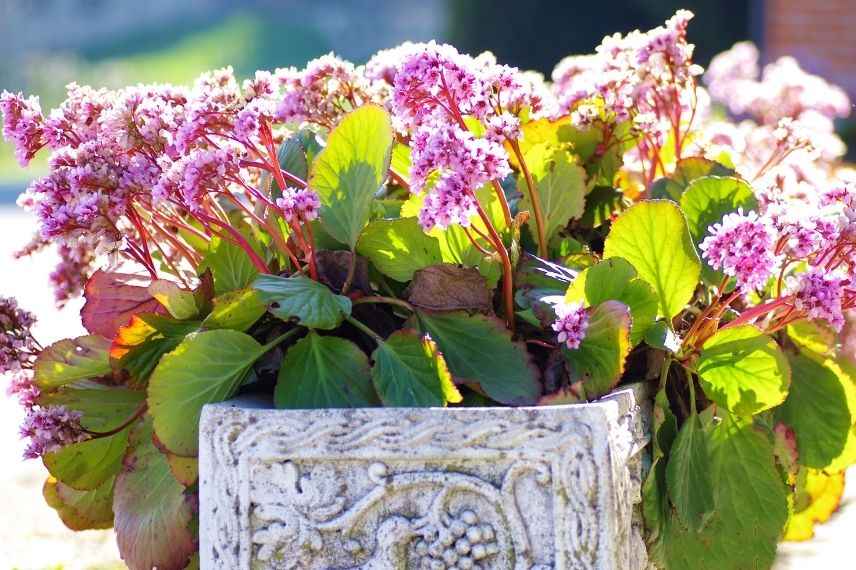
Bergenia in a large container
Caring for Bergenia in Pots
Easy to care for, robust and hassle-free, bergenia requires little maintenance to thrive. However, emphasis should be placed on watering to ensure it retains the cool soil essential for its proper development.
Watering
Bergenia prefers its substrate to remain moist, without becoming waterlogged. After planting, water regularly during the first year to encourage the establishment of the plant.
Plan for an average of one watering per week, as soon as the substrate begins to dry out on the surface. In summer, increase to twice a week, or more in case of prolonged drought. Bergenia can tolerate heat well, as long as the soil remains cool.
Opt for rainwater, which is generally less calcareous than tap water.
Applying a mulch, to be renewed once decomposed, also helps to limit natural evaporation and better retain moisture at the base of the plant.
Fertilisation
Bergenia is an easy plant that thrives even in the poorest soils. The colours of its foliage are often more vibrant in such substrates. However, the plant develops better in soil rich in organic matter, which promotes flowering. In pots, nutrients deplete much faster than in open ground, so we recommend adding a handful of compost in autumn. Lightly scratch the surface substrate with a tool or fork to mix it with the compost.
You can also use a fertiliser for flowering plants or a fertiliser for containers and pots, following the dosages recommended by the manufacturers. Note that fertilisers high in nitrogen may encourage leaf production at the expense of flowers.
Pruning
Pruning bergenia in pots involves just two simple maintenance and cleaning tasks.
At the end of winter, remove damaged, dried, or possibly spotted leaves. Cut them at the base using well-sharpened and disinfected pruning shears. Similarly, remove the flower spikes once flowering is finished, at the end of spring.
Repotting
Bergenia is a slow-growing plant. It does not therefore need to be repotted regularly each year. Simply perform a light top dressing, replacing the top few centimetres of substrate with fresh potting soil.
After a few years (around 4 to 5 years), when the plant begins to tire, its growth stagnates, and flowering decreases, you can perform a division. Do this in spring or autumn, separating the root ball into two or three pieces, which can be repotted individually or replanted in open ground.
Diseases
Bergenia is a robust plant, not very susceptible to pests and diseases. The young foliage should simply be monitored in spring, as it may fall victim to attacks from snails or slugs.
In pots, bergenia can also be attacked by larvae of otiorhynchus (a small beetle related to weevils) that feed on the rhizomes and roots. In case of an attack, we recommend biological control solutions by spraying nematodes.
→ Find our complete advice sheet: Diseases and pests of bergenia
 Otiorhynchus leave characteristic marks around the edges of bergenia leaves
Otiorhynchus leave characteristic marks around the edges of bergenia leaves
For more information, check out our article “Biological control, beneficial nematodes: how to use them properly?”.
Finally, bergenia can be affected by fungal diseases that cause spots on the foliage. Immediately remove affected parts to prevent them from contaminating the rest of the plant and ensure a slightly more airy exposure.
Wintering
Bergenia in pots can easily spend the winter outdoors. Indeed, in its natural state, bergenia grows in cold, mountainous areas that are snow-covered in winter. These origins give it great hardiness and cold resistance, down to nearly -30°C. Note that snow provides effective protection for the foliage due to its insulating properties. During this period, ensure that the soil remains well-drained to avoid any water stagnation, which can be particularly harmful during the cold season.
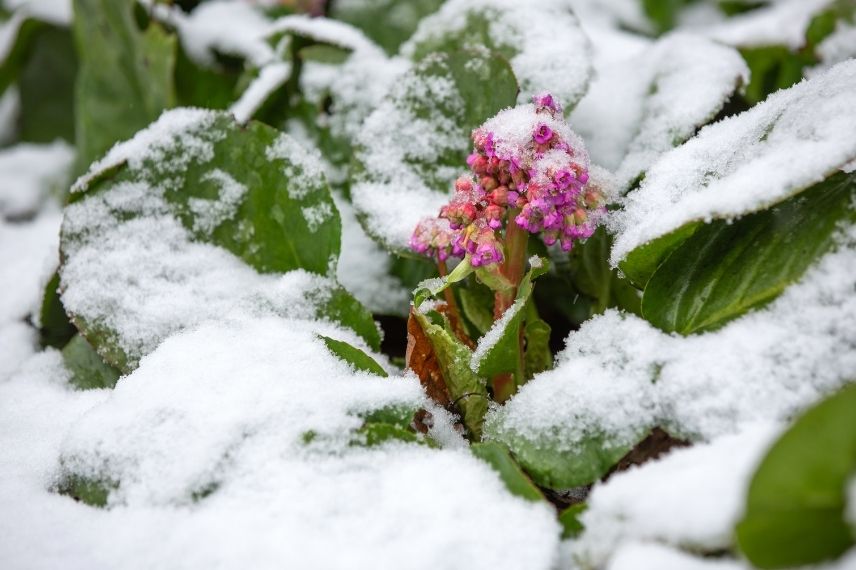 Bergenia is very hardy and does not require wintering
Bergenia is very hardy and does not require wintering
- Subscribe!
- Contents

































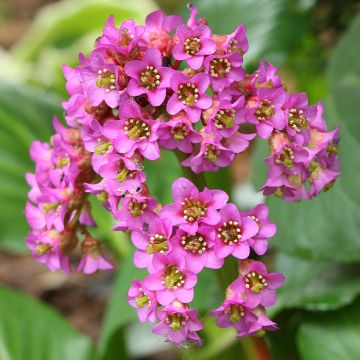
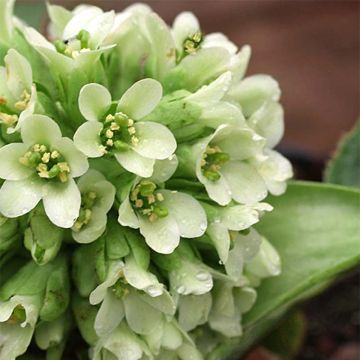
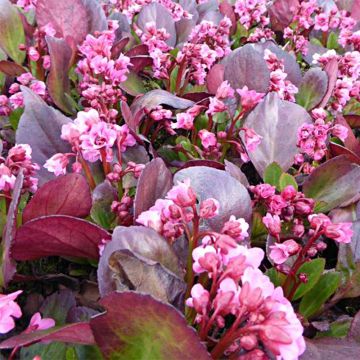
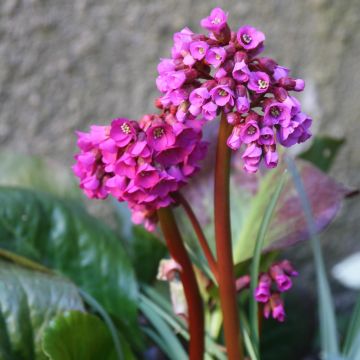
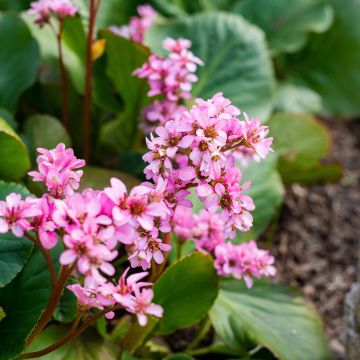

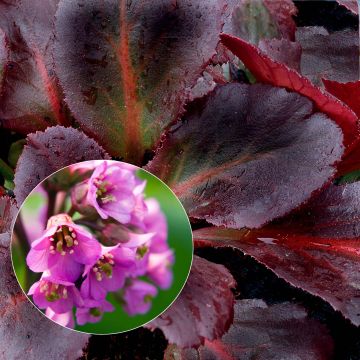
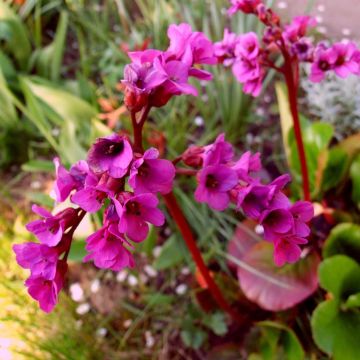
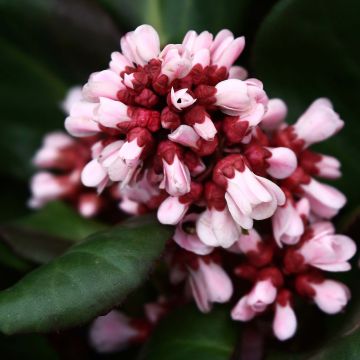
Comments